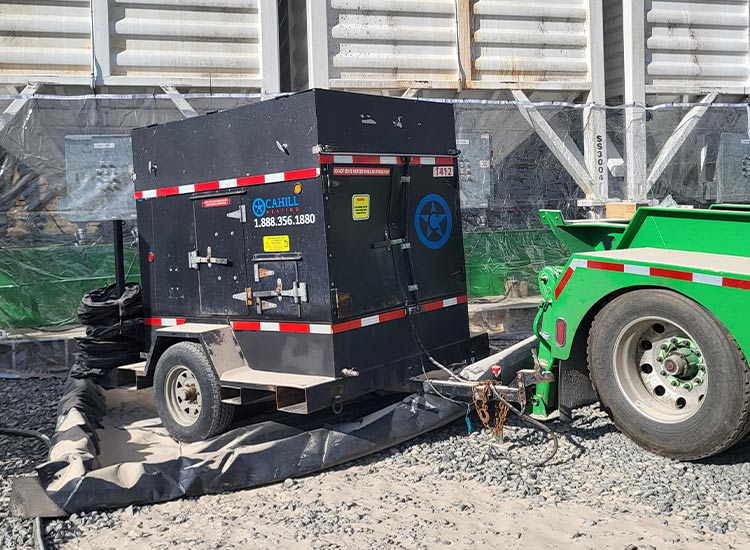Construction Site Climate Control: From Foundation to Finish
Every stage of construction impacts the final outcome. Temperature and humidity fluctuations can affect everything from concrete curing to final finishes, potentially causing delays and defects. Builders can prevent costly setbacks and ensure high-quality results by implementing climate control strategies at each phase.
Let’s explore climate control needs throughout the construction process and how to manage them effectively.

Climate Control Needs at Different Construction Phases
Each phase of construction presents unique climate challenges. Fortunately, climate control technology offers solutions for common issues. Here are three key areas where it plays a crucial role:
Foundation and Groundwork
Cold temperatures slow or halt concrete curing, while excessive heat can cause premature drying and cracking. Heating solutions help maintain optimal curing conditions. Moisture from rain or melting snow can also destabilize the ground, requiring dehumidification to ensure site safety and stability.
Structural Framing and Enclosures
Wind, rain, and temperature fluctuations can affect exposed materials. Temporary heating and ventilation systems protect worksites and materials. Forced air heaters help maintain stable interior temperatures, even when the exterior structure remains incomplete.
Interior Finishing
Drywall, paint, adhesives, and flooring materials require stable temperatures and humidity levels to set properly. Dehumidifiers and temperature control solutions prevent defects and rework, while proper ventilation accelerates drying times, keeping construction schedules on track.
Protecting Temperature-Sensitive Materials
Many construction materials—such as concrete, paint, coatings, wood, and flooring—require specific temperature and humidity conditions. Uncontrolled climate fluctuations can lead to structural weaknesses, warping, swelling, and shrinkage, causing costly delays and rework. Rapidly adjusting humidity and temperature at critical stages is essential to preventing these issues.
Managing Multiple Zones in Partially-Completed Structures
As construction progresses, climate control may need to be tailored to different areas of the building or construction site. Here are three examples of where reliable, flexible climate control options come into play to help in project completion:
- Open vs. Enclosed Spaces: Open sections may need temporary heating, while enclosed areas require ventilation and humidity control. Protecting enclosed spaces from temperature swings helps avoid material damage and ensures the comfort of workers.
- Simultaneous Workflows: Different trades working in various areas of a site may need different conditions (for example, warm air for drywall taping vs. dry air for flooring installation). Using zoned climate control, builders can ensure that each part of the site has the ideal conditions.
- Energy Efficiency: Zoned heating and cooling systems ensure resources are directed where they’re needed most, reducing costs (and environmental impact!). High-efficiency heating units can lower fuel consumption while maintaining performance.
Ensure the Right Climate for Your Project
Harsh weather and temperature-sensitive materials shouldn’t slow you down! Work with experts who can provide reliable, tailored climate control solutions.
At Cahill Heating Rentals, we offer industry-leading heating and climate control solutions designed specifically for construction sites. Our team will help you select the right equipment to keep your project on track—no matter the weather.
Questions about your climate control needs?
Contact us today to find the best solutions for your worksite.







